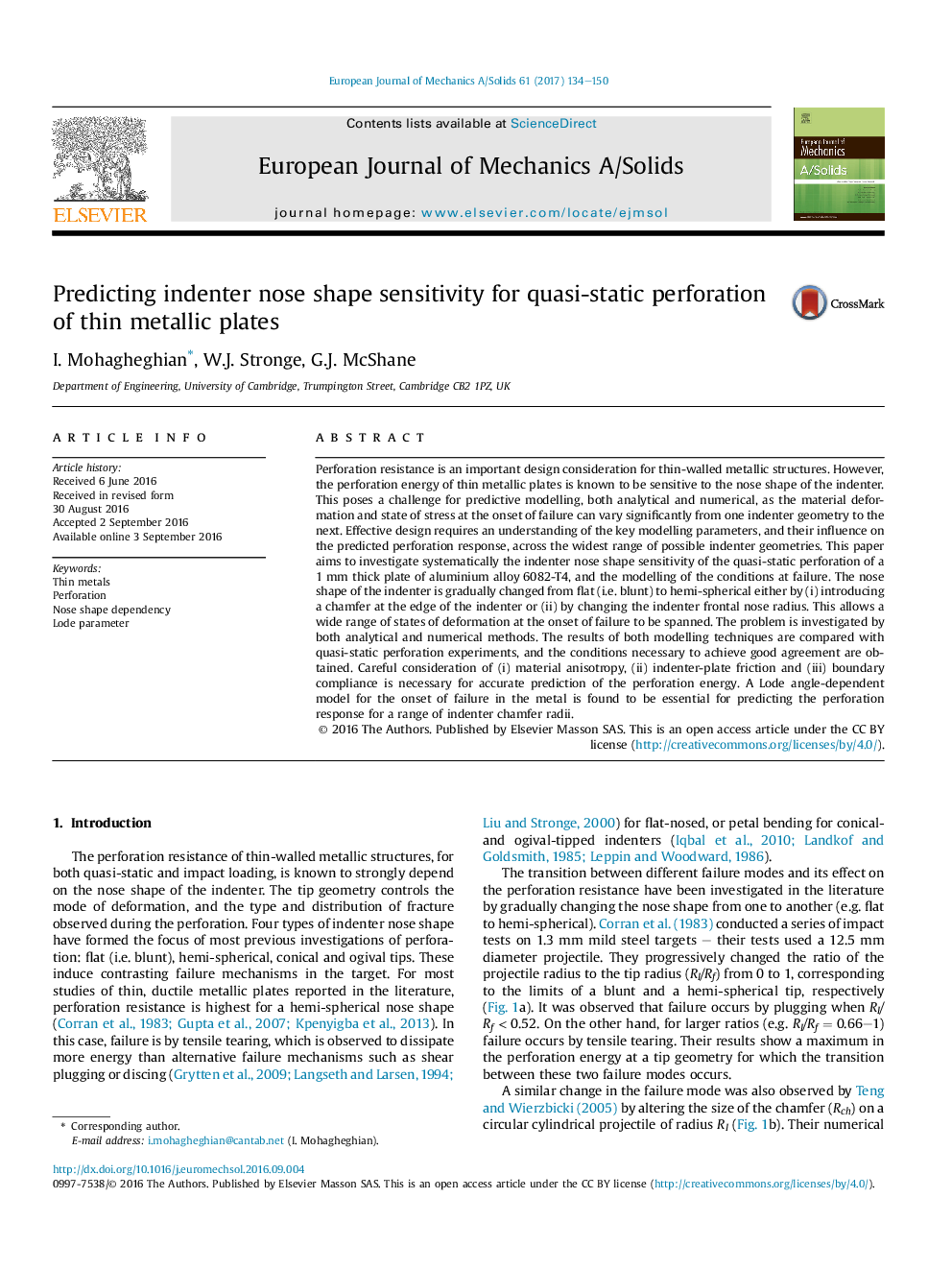| کد مقاله | کد نشریه | سال انتشار | مقاله انگلیسی | نسخه تمام متن |
|---|---|---|---|---|
| 5014363 | 1463186 | 2017 | 17 صفحه PDF | دانلود رایگان |
- Indenter nose shape sensitivity of quasi-static perforation is investigated by analytical and numerical approaches.
- In general, model predictions match experimental results reasonably well over a wide range of nose shapes.
- Limitations of each modelling approach are discussed.
- Careful consideration of material anisotropy, indenter-plate friction and boundary compliance is necessary.
- The Lode angle dependency is essential for predicting the indentation response across a wide range of tip geometries.
Perforation resistance is an important design consideration for thin-walled metallic structures. However, the perforation energy of thin metallic plates is known to be sensitive to the nose shape of the indenter. This poses a challenge for predictive modelling, both analytical and numerical, as the material deformation and state of stress at the onset of failure can vary significantly from one indenter geometry to the next. Effective design requires an understanding of the key modelling parameters, and their influence on the predicted perforation response, across the widest range of possible indenter geometries. This paper aims to investigate systematically the indenter nose shape sensitivity of the quasi-static perforation of a 1Â mm thick plate of aluminium alloy 6082-T4, and the modelling of the conditions at failure. The nose shape of the indenter is gradually changed from flat (i.e. blunt) to hemi-spherical either by (i) introducing a chamfer at the edge of the indenter or (ii) by changing the indenter frontal nose radius. This allows a wide range of states of deformation at the onset of failure to be spanned. The problem is investigated by both analytical and numerical methods. The results of both modelling techniques are compared with quasi-static perforation experiments, and the conditions necessary to achieve good agreement are obtained. Careful consideration of (i) material anisotropy, (ii) indenter-plate friction and (iii) boundary compliance is necessary for accurate prediction of the perforation energy. A Lode angle-dependent model for the onset of failure in the metal is found to be essential for predicting the perforation response for a range of indenter chamfer radii.
Journal: European Journal of Mechanics - A/Solids - Volume 61, JanuaryâFebruary 2017, Pages 134-150
